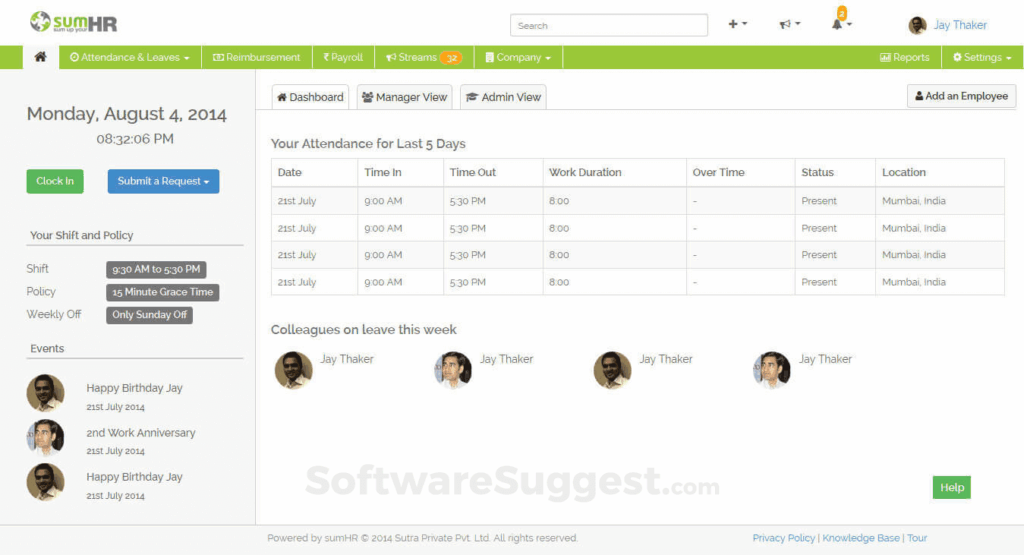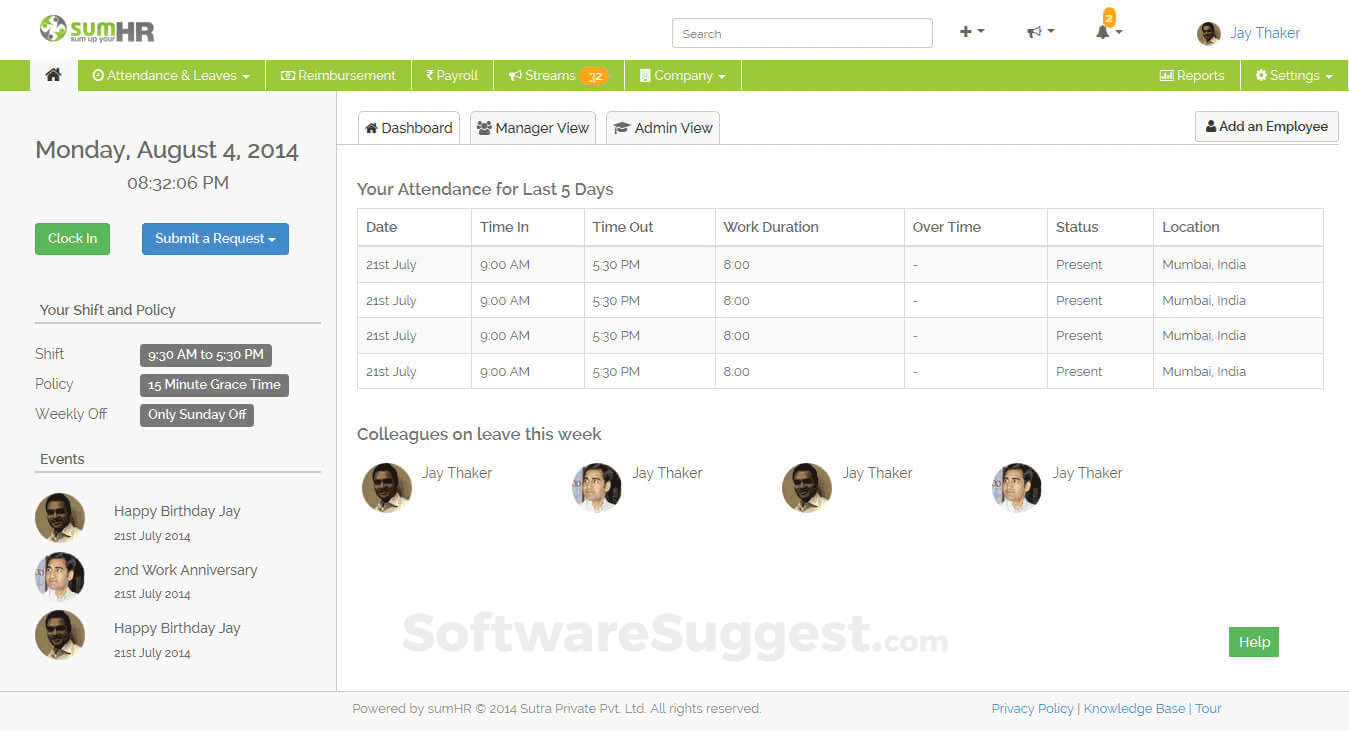
Streamline Your Workforce: The Ultimate Guide to Leave Management Systems
In today’s fast-paced business environment, efficient workforce management is crucial for success. One critical aspect of this is effectively managing employee time off. A robust leave management system can significantly improve productivity, reduce administrative burdens, and ensure compliance. This comprehensive guide will explore the benefits of implementing a leave management system, the key features to look for, and how to choose the right solution for your organization.
Understanding Leave Management Systems
A leave management system is a software solution designed to automate and streamline the processes associated with employee leave requests, approvals, tracking, and reporting. It replaces manual, often paper-based, methods with a centralized digital platform. This digital transformation allows HR departments and managers to handle time-off requests more efficiently and accurately. Manual processes are prone to errors, time-consuming, and lack transparency. A leave management system eliminates these issues, providing a clear audit trail and real-time visibility into employee absences.
Key Benefits of Implementing a Leave Management System
- Improved Efficiency: Automates leave requests, approvals, and tracking, freeing up HR staff to focus on more strategic initiatives.
- Reduced Errors: Minimizes the risk of errors associated with manual data entry and calculations.
- Enhanced Transparency: Provides employees with clear visibility into their leave balances and request status.
- Better Compliance: Ensures compliance with labor laws and company policies regarding time off.
- Data-Driven Insights: Generates reports on leave patterns and trends, enabling better workforce planning.
- Improved Employee Morale: Offers a user-friendly and transparent process for requesting and managing time off, boosting employee satisfaction.
Core Features of a Modern Leave Management System
When evaluating leave management systems, it’s essential to consider the features that best align with your organization’s needs. Here are some core features to look for:
Automated Leave Requests and Approvals
The system should allow employees to easily submit leave requests online, specifying the type of leave, dates, and any relevant details. Managers should be able to review and approve or reject requests with just a few clicks. Automated notifications should be sent to both employees and managers throughout the process.
Leave Balance Tracking
The system should automatically track employee leave balances, including vacation time, sick leave, personal days, and any other type of leave offered by the organization. It should also handle accruals based on company policy and legal requirements. Accurate leave management is crucial for payroll and resource planning.
Policy Configuration
The system should allow administrators to configure leave policies based on various factors, such as employee tenure, department, or location. This ensures that leave policies are applied consistently across the organization. [See also: Company Handbook Best Practices]
Reporting and Analytics
The system should provide robust reporting and analytics capabilities, allowing HR departments to track leave patterns, identify trends, and generate reports for compliance purposes. This data can be used to improve workforce planning and identify potential issues, such as excessive absenteeism. Analyzing leave management data provides valuable insights.
Integration with Other Systems
The leave management system should seamlessly integrate with other HR systems, such as payroll, HRIS, and time and attendance systems. This integration eliminates the need for manual data entry and ensures that all systems are synchronized. A well-integrated leave management system improves overall HR efficiency.
Mobile Accessibility
In today’s mobile-first world, it’s crucial that the leave management system is accessible on mobile devices. This allows employees to submit leave requests and managers to approve them from anywhere, at any time. Mobile accessibility enhances convenience and responsiveness.
Self-Service Portal
A self-service portal empowers employees to manage their own leave requests, view their leave balances, and access relevant information without needing to contact HR. This reduces the burden on HR staff and improves employee satisfaction. A good leave management system includes a user-friendly self-service portal.
Choosing the Right Leave Management System
Selecting the right leave management system for your organization requires careful consideration of your specific needs and requirements. Here are some factors to consider:
Company Size and Structure
The size and structure of your organization will influence the type of leave management system that is most suitable. Smaller companies may be able to get by with a simpler, more basic system, while larger, more complex organizations will need a more robust and feature-rich solution.
Industry-Specific Requirements
Certain industries have specific leave requirements that need to be taken into account. For example, healthcare organizations may need to track different types of leave related to patient care. Ensure the leave management system can accommodate your industry’s unique needs.
Budget
Leave management systems vary in price, so it’s essential to establish a budget before you start your search. Consider the total cost of ownership, including implementation, training, and ongoing maintenance. Open-source leave management solutions can be a cost-effective alternative.
Scalability
Choose a leave management system that can scale with your organization as it grows. The system should be able to accommodate increasing numbers of employees and evolving leave policies. Scalability is a key consideration for long-term success. A good leave management system will grow with your business.
Ease of Use
The system should be user-friendly and easy to navigate for both employees and managers. A complex and difficult-to-use system will lead to frustration and resistance. Look for a system with an intuitive interface and comprehensive training materials.
Vendor Reputation and Support
Research the vendor’s reputation and track record. Read reviews and testimonials to get an idea of their customer service and support. Choose a vendor that offers reliable support and ongoing maintenance. A reputable leave management vendor is essential for long-term success.
Implementing a Leave Management System
Once you’ve chosen a leave management system, it’s important to plan and execute the implementation carefully. Here are some steps to take:
Define Your Leave Policies
Clearly define your leave policies and ensure they are documented and communicated to all employees. This will help to ensure consistency and compliance.
Configure the System
Configure the leave management system to reflect your leave policies and organizational structure. This may involve setting up different leave types, accrual rules, and approval workflows.
Train Employees and Managers
Provide comprehensive training to employees and managers on how to use the system. This will help to ensure that everyone is comfortable with the new process.
Communicate the Change
Communicate the change to employees well in advance and explain the benefits of the new system. Address any concerns or questions they may have. [See also: Effective Change Management Strategies]
Monitor and Evaluate
Monitor the system’s performance and gather feedback from users. Make adjustments as needed to optimize the system and ensure it is meeting your organization’s needs. Continuously evaluate your leave management processes.
The Future of Leave Management
The future of leave management is likely to be shaped by several trends, including:
- Increased Automation: AI and machine learning will be used to automate more aspects of leave management, such as predicting leave patterns and identifying potential issues.
- Personalization: Leave policies will become more personalized to meet the individual needs of employees.
- Integration with Wellness Programs: Leave management will be integrated with wellness programs to promote employee health and well-being.
- Data-Driven Decision Making: HR departments will use data from leave management systems to make more informed decisions about workforce planning and resource allocation.
Conclusion
A well-implemented leave management system can significantly improve workforce efficiency, reduce administrative burdens, and ensure compliance. By carefully considering your organization’s needs and selecting the right solution, you can streamline your leave management processes and create a more productive and engaged workforce. Investing in a modern leave management system is an investment in your company’s future. The benefits of efficient leave management are undeniable, making it a critical component of any successful HR strategy. Don’t wait, start exploring leave management systems today!

